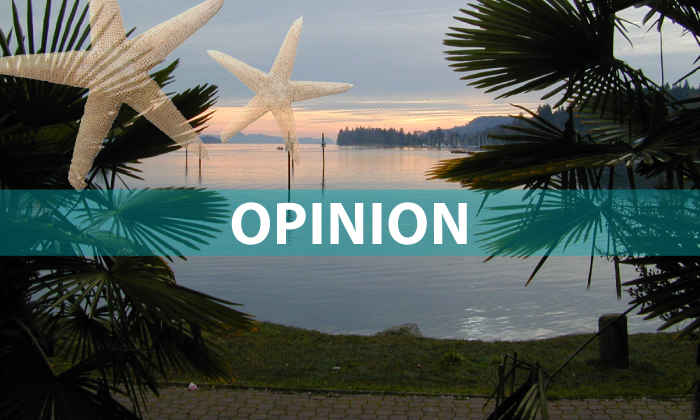BY DAVID RAPPORT
In a Dec. 16, 2024 piece published on the Salt Spring Exchange, Kerrie Proulx, a board member of Salt Spring Solutions, suggests abandoning the use of buildout as “the main braking mechanism” for protecting our island’s environment.
She argues that the notion of buildout has no ecological currency; that it simply reflects the estimated population if all lots on the island were fully developed. In a follow-up letter in the Dec. 18 Driftwood (“Environmental Values or Economic Exclusion”), she goes further, stating that “zoning was never about environmental protection” but rather about creating enclaves for the wealthy and forcing the less well-off into “precarious, often environmentally compromised housing situations.” She concludes that environmental values should take the back seat for the sake of economic inclusion, and that the notion of buildout is not useful because it is a planning concept divorced from ecology.
That last point is the one thing on which I can agree with Kerrie: the maximum number of people that the currently allowable housing will support is not by itself an indicator of our impact on the island’s ecosystems. That, however, in no way means that we should abandon all restraints to development on Salt Spring! Rather, we need more appropriate ways to measure our impact. The real measure of our impact lies in the combined influence of our numbers (population), our consumption and our use of destructive technologies that have the capacity to degrade ecosystems even in places where population densities are very low.
In a 2007 paper commissioned by the Trust titled An Ecosystem Health Perspective Relevant to Salt Spring Island’s OCP Review, I argued that ecological impacts should dictate the real limits to development in the Trust Area. And I suggested that, regardless of any degree of buildout, we are at (or past) the point of sustaining the health of our ecosystems, and that this situation calls for a moratorium on further development until such time as the ecological damage we have inflicted is rectified.
In other words, the limits to growth are set by our total impacts on our shared environment. Those impacts show up in the form of over-stressing our ecosystems: reduction of habitat and biodiversity, spread of invasive species, loss of the few remaining stands of mature forest and increasing dominance of young, far more flammable forests, deterioration of freshwater quality and quantity, and so on.
This is not just being a “greenie.” Our community health and wellbeing and the health of our ecosystems are intimately interlocked. Wherever the health of ecosystems becomes compromised, it poses palpable risks for people. Anxiety rises and mental and emotional health decline. Nor can people thrive economically in a degraded environment.
In a situation in which our main ecosystems are already heavily compromised, pulling back on the human activities that are causing the destructive pressures is an essential and necessary step towards regaining health of people and the environment. Spurious arguments pitting our economy against our ecology only serve to keep our heads buried in the sand. Degrading the land to accommodate economic goals is self-defeating and, in the end, destructive of both nature and culture.
The B.C. government has come to similar conclusions in embarking on its new flagship initiative to restore health to ecosystems across the province — the Biodiversity and Ecosystem Health Initiative — in partnership with First Nations. Far from calling for more unrestrained development to the cost of the health of our ecosystems, and ultimately of the health and wellbeing of islanders, a positive way forward would be for our community to lend its support to the province’s initiative.
The challenges of carrying this out are undeniably daunting. Achieving real progress will require a dramatic rethink of our place in the web of life, and the recognition that our future hinges vitally on our capacity to reinvent our economy in ways compatible with biophysical limits — from local to planetary. We will need to shed the “split-brain” mentality that has enabled us to ignore the fundamental interdependence between the health and well-being of our community and the health of our ecosystems.
Impossible? Not really, if we only realize that making this change is a win-win situation for both the environment and people, while continuing with “business as usual” is a lose-lose proposition. Our most urgent task is to reimagine our community as a part of the natural world, not as apart from it, and do our best to integrate our societal goals within the limits of ecological constraints.

